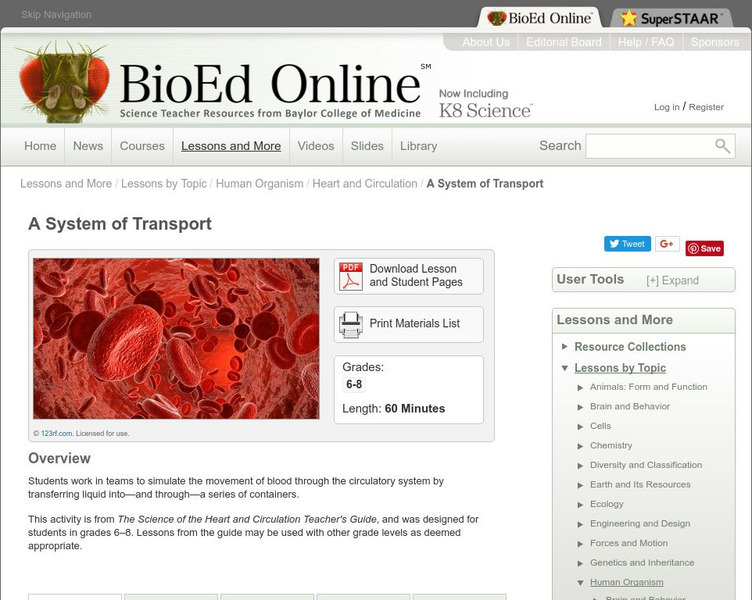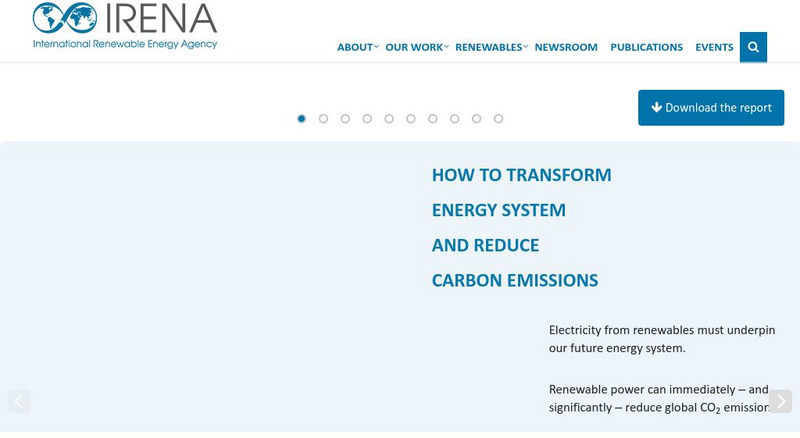Other
Space Applications Centre: Geographical Information System Concepts
The introduction of this article explains why GIS data is so critical to a government being able to plan for natural resources development and management. The article goes on to explain key geographic concepts, what GIS is and why it...
Other
Gis Lounge: What Is Gis?
Tries to give a clear answer to the often-asked question, 'What is GIS?'
TeachEngineering
Teach Engineering: Digital Mapping and Geographic Information Systems (Gis)
Geographic information systems (GIS), once used predominantly by experts in cartography and computer programming, have become pervasive in everyday business and consumer use. This unit explores GIS in general as a technology about which...
US Geological Survey
Geographic Information Systems
This is an extensive resource explaining what Geographic Information Systems (GIS) are, how they work, applications of GIS, and GIS through history.
McGraw Hill
Mc Graw Hill Education: Bioscience: Sensory System [Pdf]
A 22-page textbook chapter identifying sensory systems of animals and humans for those studying how the various senses assist adaptation to environments. Investigates classes of environmental stimuli as well as gives an in-depth...
Open Curriculum
Open Curriculum: Circulatory System
Detailed information about the many functions and components of the cardiovascular system. Also looks at the lymphatic system and cardiovascular disease.
Other
Get Body Smart: Human Anatomy and Physiology: Skeletal System
Students can learn about the human skeletal system through this easy-to-access tutorial. Sections include an introduction, organization of the skeleton, appendicular skeleton, and the axial skeleton. Interactive quizzes for each section...
OpenStax
Open Stax: Anatomy & Physiology: Drugs That Affect the Autonomic System
Students learn about the classes of pharmaceuticals that interact with the autonomic nervous system, and then relate the consequences of nicotine abuse with respect to autonomic control of the cardiovascular system.
Texas Education Agency
Texas Gateway: Solving Systems of Equations With Algebraic Methods
Given verbal and/or algebraic descriptions of situations involving systems of two-variable linear equations, the student will solve the system of equations by different methods.
OpenStax
Open Stax: Anatomy & Physiology: Anatomy of the Lymphatic and Immune Systems
Students learn and apply understanding of the structure and function of the components of the human lymphatic and immune systems.
University Corporation for Atmospheric Research
Ucar: The Systems Game
Systems thinking is an important concept across the Earth sciences. In this game, students either are a part of a system or serve as scientists tasked with observing and making sense of the system moving in front of them.
Open Curriculum
Open Curriculum: Muscular System
In this resource, students learn the major role of the muscular system, about muscle fibers, the role of ATP and calcium in muscle contraction, how muscles move bones, and how muscles respond to aerobic and anaerobic exercise.
OpenStax
Open Stax: Anatomy and Physiology: Functions of the Integumentary System
Learn here all about how the integumentary system functions: such as protecting the body from invasion by microorganisms, chemicals, and other environmental factors; preventing dehydration; acting as a sensory organ; modulating body...
OpenStax
Open Stax: Anatomy and Physiology: Homeostatic Regulation of Vascular System
Students can learn about the homeostatic regulation of the vascular system, and find out how exercise affects it.
Texas Education Agency
Texas Gateway: Solving Systems of Equations With Graphs
Given verbal and/or algebraic descriptions of situations involving systems of linear equations, the student will solve the system of equations using graphs. Incorporates GeoGebra applets.
OpenStax
Open Stax: Anatomy & Physiology: Organs and Structures of the Respiratory System
Students learn and understand the structures that make up the respiratory system, and then apply that knowledge to understand the process of oxygen and carbon dioxide exchange.
PBS
Pbs Learning Media: Convective Cloud Systems
This video segment adapted from the Atmospheric Radiation Program explains the differences in the formation of tropical convective cloud systems over islands and over the ocean. [1:07]
BioEd Online
Bio Ed Online: A System of Transport
In this lesson, students are required to work in teams to simulate the volume of blood moving through the circulatory system by transferring blliquid into-and through-a series of containers.
Other
Ohio Dept. Of Education: Lesson Plan: Transportation Systems Grade Four
For this lesson unit, learners learn about transportation systems, including the Great Lakes canal system, and how modes of transportation has changed over time with advancements in technology. There is a large student research component...
Other
Irena: How to Transform Energy System and Reduce Carbon Emissions
Information about renewable energy and how the world's energy system must continue to transform in order to combat climate change. Presents statistics about what different countries are doing to use more and more renewable energy...
Other
Adb: How Remote Sensing Technology Improves Efficiency of Irrigation Systems
With the increase of free satellite data combined with scientific algorithms and cloud computing capacity, developing affordable operational monitoring systems for irrigation management in Asia is now feasible. The use of virtual field...
Science Buddies
Science Buddies: Career Profile: Liquid Waste Treatment System Operator
Wastewater treatment plants are essential for providing us with clean water. The job of the liquid waste treatment system operator is to keep these plants operating. Find out about the education requirements for this job as well as the...
University of Colorado
University of Colorado: Ph Et Interactive Simulations: My Solar System
An interactive simulation that teaches about motion, acceleration, and velocity by allowing students to build their own solar system and watch the effects of gravitational pull and how that changes with initial position, velocity, and...
Khan Academy
Khan Academy: The Endomembrane System
Article looks at the structure and function of the different parts of the endomembrane system, how proteins, lipids, and vesicles are transported between these parts, and how this activity keeps the cell running smoothly.
Other popular searches
- Solar System
- Body Systems
- Skeletal System
- Circulatory System
- Metric System
- Digestive System
- Nervous System
- Human Biology
- Muscular System
- Respiratory System
- Metric Measurement
- Excretory System


![Mc Graw Hill Education: Bioscience: Sensory System [Pdf] eBook Mc Graw Hill Education: Bioscience: Sensory System [Pdf] eBook](https://content.lessonplanet.com/knovation/original/455137-8656817b2aa2e7f4313d9c9c0b6654b0.jpg?1661557170)











